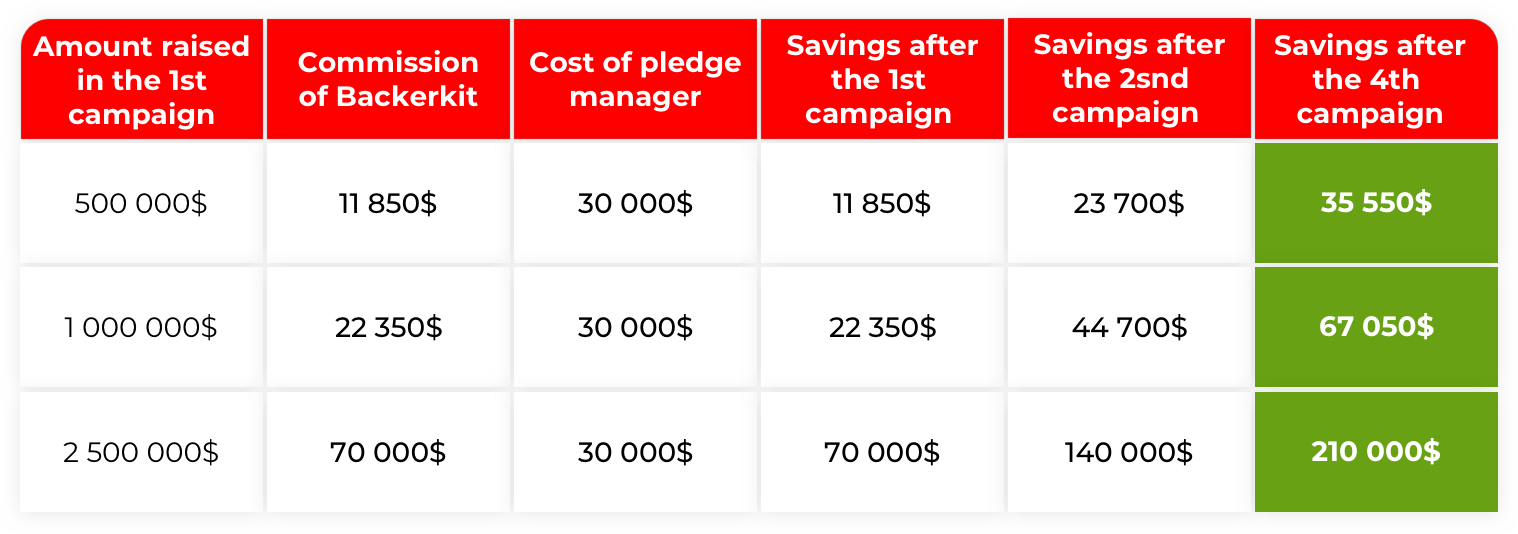
In widespread opinion, the cost of your own pledge manager is so high that this solution is only available to the biggest shots, but nothing could be further from the truth. Currently, at FROGRIOT, we are developing two such tools for our clients and this post will answer the question: is it the right time to have such a tool, why is it worth having and what costs do you have to take into account.
There are at least several reasons why it is worth owning this type of tool, but the most basic one is saving money. With an appropriate volume of sales, the translation into profit (or, in fact, lack of additional costs incurred) is immediate.
Another reason may be meeting individual requirements specific to your business. With an existing tool, we have no control over how it works. However, by creating a customized solution, we can tailor the functionality, appearance, and features of both the user application and the administration panel to our business needs.
Acquisitions, not only in the board games industry, are something common. But if you sell, you want to sell expensive 😉 Having your own pledge manager affects two aspects: it not only increases the value of the company as such, but it also allows you to generate better profits which automatically translate into higher valuation, e.g. EBITDA.
To have some context, let us look at the cost of using a pledge manager for a game campaign funded on Kickstarter. As a basis, let us take a game campaign that raised $1,000,000 with 10,000 backers. Taking into account the basic costs of Backerkit, the cost to support such a campaign is $15,000. In addition, in the so-called late pledge, you can safely assume 20% of the additional service, which means a further $7,000 indirect costs, altogether resulting in the total cost of $22,000.
For a larger campaign, with the above-accepted criteria of $2,500,000, the total cost of service is $51,000.
At this point, it is worth contrasting the cost of external service with the cost of creating and maintaining your own tool. We estimate (depending on specific functionalities, of course) that creating your own pledge manager is a one-off cost ranging between $20,000 and $40,000.
In addition, you need to add the cost of maintaining the infrastructure and fees associated with payment systems (payment per transaction) and the cost of sending emails to the user base. In the annual model, we can assume that the cost of maintaining the infrastructure is $1,800, the cost of sending emails is $2,076, and the fee for payment systems is 1.4% + flat fee ($0.25USD).
Depending on the number of backers and the amount collected, we can start earning even after one campaign. The costs of both models are presented in the table below:

It is not cost-effective to have your own Pledge Manager when creating smaller-scale campaigns (e.g. for <$100,000 of raised funds the cost of creating your own tool always exceeds the cost of using an external Pledge Manager).
However, it is definitely worth investing in the tool if our individual campaigns reach an average revenue of $100,000 and provided that we plan 2 campaigns per year. This is illustrated by the following graph:

As you can see, just one or two successful campaigns can not only cover the cost of creating your own pledge manager, but also bring substantial savings. For smaller campaigns and companies considering growth (which is also the idea behind the Kickstarer-based sales model for creating snowball effects), profits are just a matter of the time horizon of such an investment. With successful campaigns, above $1M, the question of creating your own tool of this type becomes basically the only reasonable decision from a business point of view.
Again, data are best presented in the form of a table, for illustration purposes, I have taken the same figures for the campaign as above, and the money saved is really impressive.

Money saved can be reinvested in marketing campaigns to back the new game, making your own pledge manager even more profitable. With the cost analysis presented in this way, building your own pledge manager becomes not only a reasonable and logical, but also an immediate decision worth making as long as you operate a game publishing model with game backing on Kickstarter and you have adequate volume of sales.
*All the costs of pledge manager are based on Backerkit public info